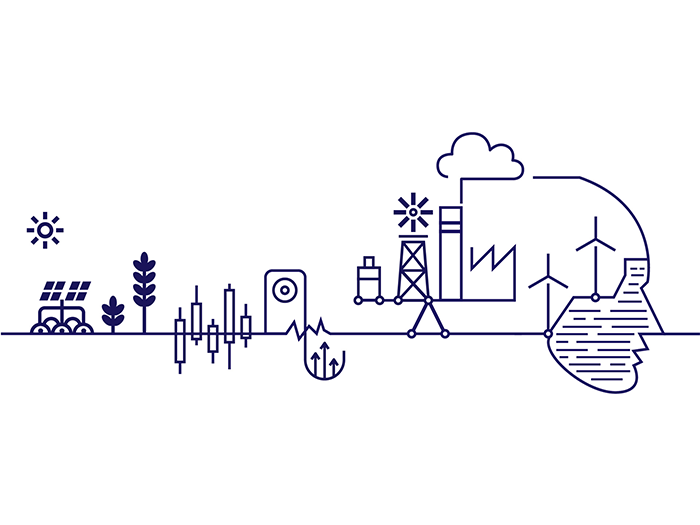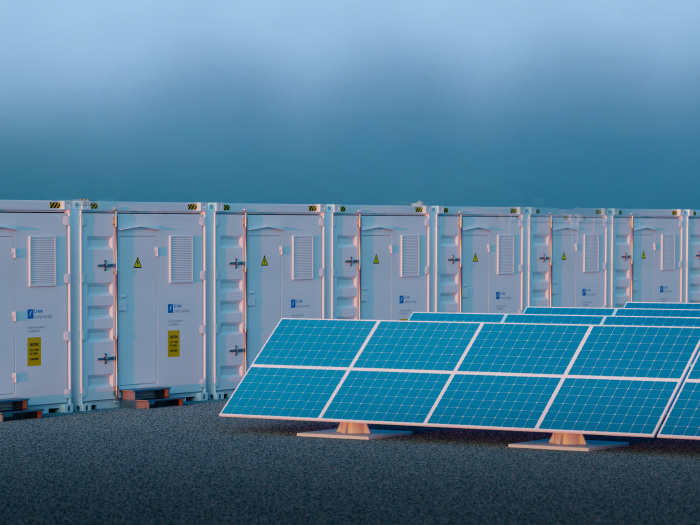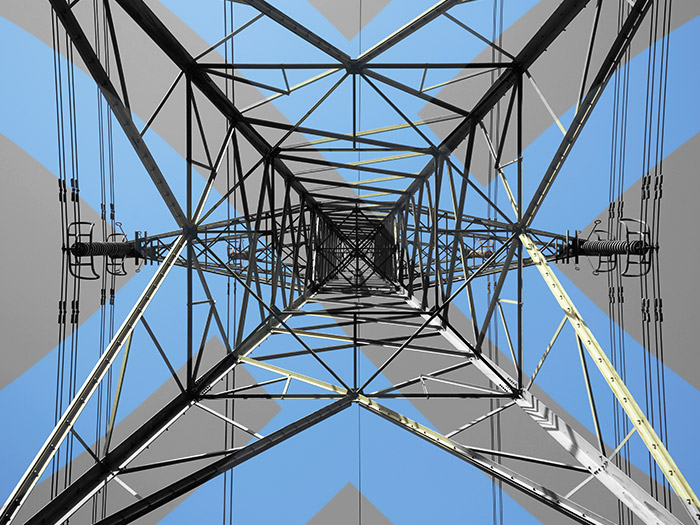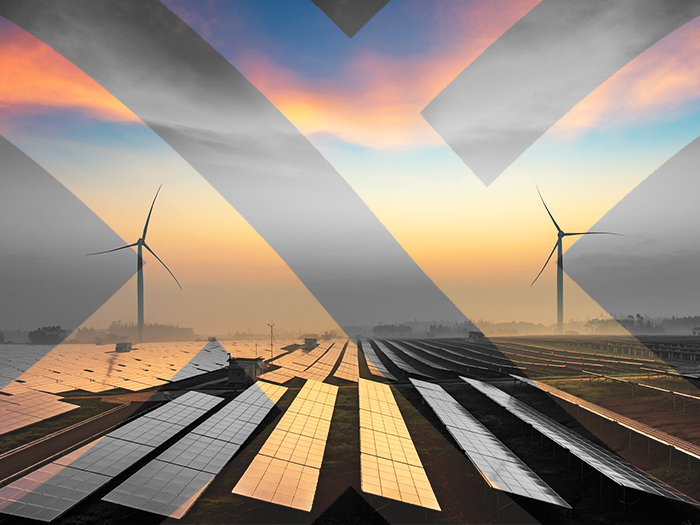News
better business decisions
Posted 2 years ago | 10 minute read

Artificial intelligence in energy – everything you need to know
A new era
The artificial intelligence era is here, and energy is often cited as one of the most relevant applications for this technology, bringing numerous benefits for all players in the value chain.
AI, supporting and enabling technologies are already adding value today, with companies actively integrating it in process-oriented tasks and increasing speed of delivery, revenue, or reducing the costs associated. Use the chat facility on a bank’s website, for instance, and there’s a high probability that you’re talking to a chatbot, designed to recognise the content of your question or comment and provide a relevant, meaningful response.
For businesses planning an appropriate response to AI depends on having a clear picture of the current opportunities and the future possibilities of the technology. But what is AI? And how is it changing the energy landscape?
Here we set out everything you need to know about AI and supporting technologies and services, how they could benefit your business and key changes that they are bringing for the wider energy sector.
AI, machine learning and how it’s applied to robotic trading in the energy markets
In their textbook ‘Artificial Intelligence: A Modern Approach’, Stuart Russell and Peter Norvig described AI systems as “agents that receive percepts from the environment and perform actions”. In other words, AI acts on the information it gets.
Machine learning is a type of AI where software has the ability to learn without being explicitly programmed so that it can improve its response in the future and identify patterns that would have been hard to identify due to the amount of data. Machine learning uses algorithms and statistical models to process data and analyses it. It is a process similar to how humans learn and derive analysis, but much faster and more scalable.
Robotic trading is a fully automated process that uses many inputs from live energy markets to identify the best potential revenues and is able to buy and sell on the markets. Trading robots aka solvers are developed with a set of parameters that help them to make decisions. The way they work varies, although generally the software will consider the market position and opportunities for trading, then match this with your strategy, accepted level of risk and your ability to shift load. If an opportunity is identified that fits within your predefined strategy and rules trading becomes automatic and crucially trades can take place at high-frequency, much faster than is possible through manual trading.
Find out more facts about AI by downloading our E-book: Artificial Intelligence. Real Impact.
Energy markets…explained
One particular aspect of electricity is that it is produced and consumed at the same time, so, without storage technologies, you cannot generate to consume later on. Generation and demand are always fluctuating, so the challenge is to balance the grid in real-time.
As the world moves towards greater use of renewables, electricity supply becomes more volatile. Wind, tidal and solar power can’t be switched on and off like a power station. Supply and demand must always be in balance. But achieving this requires analysis of a lot of inputs and reactions in real time – making it the perfect environment for artificial intelligence and machine learning.
Balancing grid is done through multiple national grid services with different requirements and remuneration. At the same time the price of energy fluctuates with multiple markets covering different time schedules – for example if supply is low but demand is high the price of electricity on markets will increase.
These price signals encourage market participants to take action to either increase generation to gain revenue from selling power or curb their demand to avoid high costs.

Trading can take place bilaterally between market participants or on exchanges. Within each of these markets, electricity will be traded across different timescales. Spot products are traded for same-day or next-day delivery (day-ahead and intra-day markets), while forward or futures contracts are traded for delivery at a given point in the future.
While it’s not always the case, prices on longer term futures markets at least on average tend to be higher than day-ahead or intra-day markets. This is because you are essentially fixing your cost at the price on the day for delivery in the future – you are paying for price certainty. On the shorter-term day-ahead and intra-day markets there is a greater level of risk that prices may increase, equally prices may be significantly lower.
The chart below illustrates this relative to delivery date the difference in price you would have paid purchasing power at different times. It shows the historical price movements of spot, month ahead (averaged monthly) and season one, two and four ahead contracts (averaged over a season).
For example, towards the end of 2014 long term seasonal products were generally more expensive than short term products, whereas towards the start of 2013 the opposite was the case.
Average wholesale baseload UK power prices by delivery date, £/MWh

Source: Energy UK https://www.energy-uk.org.uk/publication.html?task=file.download&id=6158
Sometimes, despite trading occurring over all these markets, supply and demand are out of balance. To bridge the balance gap between other forward markets and real-time energy delivery, a balancing market is used as the last stage of trading. Given by this point there is a significant risk to the stability of the electricity grid, prices on this market tend to be much more volatile than in forward-looking markets.
Find out more about traded energy markets our blog https://gridbeyond.com/ai-in-traded-markets/
Closing the gap
Historically the success of electricity traders depended on their knowledge of prices at different market locations and their ability to forecast prices and trade at the right time. But as markets move closer to real time, this is set to change.
With the advent of AI and machine learning, forecasting future market prices becomes not only increasingly possible but critical to realise full benefits of real time trading in wholesale markets.

By determining the most likely outcome from every scenario based on existing knowledge and big data, while at the same time learning and tuning after each event to further improve future decision-making, machine learning can offer incredible value. Its ability to understand the correlation between individual events and their impact on electricity supply and demand, means guesswork is replaced by a structured, evidence-based, repeatable approach.
The last part of the chain is using robotic trading to quickly and automatically respond to prices signals that will allow you to gain revenue or reduce costs.
Drawing upon Big Data and Machine Learning, the GridBeyond’s Point Ai. Services use AI to forecast electricity prices on both long and short-terms markets and your own site consumption on a sub-second basis. We will then create an optimised solution for your load and identify arbitrage opportunities across all available short-term markets. It will balance this with your assets, productions schedules, flexibility and any generation or storage you may have on site. Once an optimised solution has been created, our Robotic Trading function will make the best available trades for you in real time – monetising your position continuously.
Find out more about the increasing move to real-time markets on our blog https://gridbeyond.com/real-time-markets-and-robotic-trading/
Benefits for business
Many businesses haven’t considered the use of machine learning, AI and robotic trading as part of their energy strategy. But if done well the revenues can be significant.
For a large energy user the benefits of an AI-powered energy platform that takes advantage of advances in machine learning and AI technologies include:
- Price forecasting, optimisation and procurement: Intelligent energy purchasing and predictive analysis of the options helps you to decide how to arrange site schedules to take optimum advantage of low price bands for the energy you buy. Using your onsite assets to ensure constant access to the energy you need, to minimise the risk of blackouts, and to sell back energy to the grid at a profit. Whether you have a broker or manage your own supply contracts, our Point Ai. Terms service could save your business up to £16,600/MW/y.
- Demand response and real time energy trading: Large industries are increasingly trading electricity through markets as a means to better manage their supplies and costs. But optimising asset requirements for participation in a growing number and fast-changing energy markets can be a challenge without the right technology or expertise. By forecasting everything from weather conditions, the need for balancing actions on the grid to short-term wholesale market prices our Point Ai. Trade service can help generate revenues of up to £62,500/MW/y.
- Advanced Asset Management: Predictive analysis, maintenance, benchmarking, and real time performance analysis of your assets can all be built into your intelligent energy management system, ensuring cost reduction and more efficient use of assets. A fault detected early using predictive analysis results in approximately £8k in maintenance costs and production loss, whereas reactive maintenance can cost around £48k. Our Point Ai. Thrive service could help you reduce maintenance costs by up to 500%.
- Front of the Meter optimisation: Owners of front of the meter assets, such as gas peaking plants or batteries also have potential to gain significant sums through multiple market trading. By maximizing all trading opportunities, whilst enhancing capacity and demand response returns a 20.7MW gas peaking plant could see revenues rise nearly £60K a year.
So, when combined machine learning, AI and robotic trading can bring real benefits. But what’s the risk?
What about the risks?
As with anything that relies on a forecast there is obviously potential for risk. But if we take more risks, we can get more benefits.
Key to using AI and machine learning technologies effectively is ensuring that you have accurate data inputs. At GridBeyond the way we do this is by combining over 60 external data inputs with on-site information and analysis. This allows us to build algorithms that assign the risk that we want to take on the market, and secondly, to monitor that risk.
There’s no denying that your site could participate in energy trading without technology in place. However, this would require some serious internal systems and a dedicated head to fulfil the requirements from moment to moment. And even with this in place, it would be unlikely you’d reap returns to the full potential. So, technology is key.
Round-up
The increasing shift away from centralised power generation is bringing big changes for the global energy landscape and there are opportunities for businesses to get involved.
Using AI and Robotic Trading combined with the expertise of our trading experts and Data Scientists, GridBeyond’s Point Ai. Services open the door for your business to take your energy strategy from passive purchasing and consumption to predictive analysis and active energy management and trading.
Using AI and Robotic Trading combined with the expertise of our trading experts and Data Scientists, GridBeyond’s Point Ai. Services open the door for your business to take your energy strategy from passive purchasing and consumption to predictive analysis and active energy management and trading. GridBeyond’s Point Ai. Services consist of three complementary products: Ai. Terms, Ai. Trade & Ai. Thrive, which together, will transform your energy into opportunity.

If you have any questions around the potential for your site, contact our team, or to learn more about the complimenting services offered by GridBeyond’s intelligent energy platform, our Point Ai. Services brochure.








